Related Research Articles

Alfred Elton van Vogt was a Canadian-born American science fiction writer. His fragmented, bizarre narrative style influenced later science fiction writers, notably Philip K. Dick. He was one of the most popular and influential practitioners of science fiction in the mid-twentieth century, the genre's so-called Golden Age, and one of the most complex. The Science Fiction Writers of America named him their 14th Grand Master in 1995.

Cyril M. Kornbluth was an American science fiction author and a member of the Futurians. He used a variety of pen-names, including Cecil Corwin, S. D. Gottesman, Edward J. Bellin, Kenneth Falconer, Walter C. Davies, Simon Eisner, Jordan Park, Arthur Cooke, Paul Dennis Lavond, and Scott Mariner.
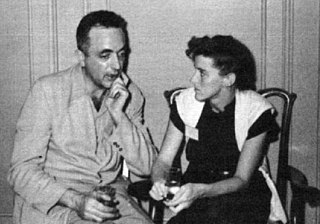
Katherine Anne MacLean was an American science fiction author best known for her short fiction of the 1950s which examined the impact of technological advances on individuals and society.
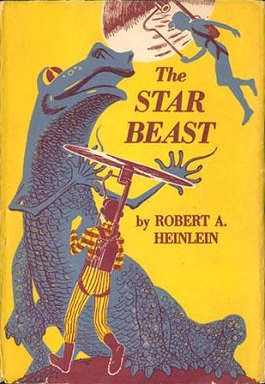
The Star Beast is a 1954 science fiction novel by Robert A. Heinlein about a high school senior who discovers that his extraterrestrial pet is more than it appears to be. The novel was originally serialised, somewhat abridged, in The Magazine of Fantasy & Science Fiction as Star Lummox and then published in hardcover as part of Scribner's series of Heinlein juveniles.

Damon Francis Knight was an American science fiction author, editor, and critic. He is the author of "To Serve Man", a 1950 short story adapted for The Twilight Zone. He was married to fellow writer Kate Wilhelm.
George Alec Effinger was an American science fiction author, born in Cleveland, Ohio.
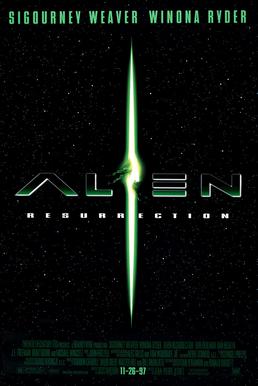
Alien Resurrection is a 1997 American science fiction horror film directed by Jean-Pierre Jeunet, written by Joss Whedon, and starring Sigourney Weaver and Winona Ryder. It is the fourth installment of the Alien franchise, and was filmed at the 20th Century Fox studios in Los Angeles, California.

Who Goes There? is a 1938 science fiction horror novella by American author John W. Campbell, written under the pen name Don A. Stuart. Its story follows a group of people trapped in a scientific outpost in Antarctica infested by shapeshifting monsters able to absorb and perfectly imitate any living being, including humans. Who Goes There? was first published in the August 1938 issue of Astounding Science Fiction magazine and was also printed as The Thing from Another World, as well as included in the collection by the same title. Its extended, novel version, found in an early manuscript titled Frozen Hell, was finally published in 2019.
"Common Time" is a science fiction short story by American writer James Blish. It first appeared in the August 1953 issue of Science Fiction Quarterly and has been reprinted several times: in the 1959 short-story collection Galactic Cluster; in The Testament of Andros (1965); in The Penguin Science Fiction Omnibus (1973); and in Isaac Asimov Presents the Great SF Stories.

Ellen Louise Ripley is a fictional character and the original protagonist of the Alien film series, played by American actress Sigourney Weaver. Considered one of the greatest characters in science fiction film history, the character earned Weaver worldwide recognition, and remains her most famous role to date. Although she was originally conceived as male for the first Alien film, director Ridley Scott decided early in production to make her a woman.
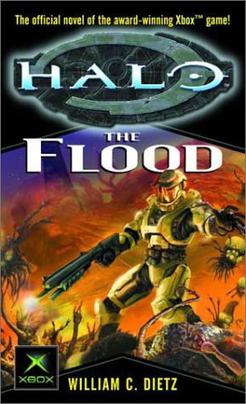
Halo: The Flood is a military science fiction novel by William C. Dietz, based on the Halo series of video games and based specifically on the 2001 video game Halo: Combat Evolved, the first game in the series. The book was released in April 2003 and is the second Halo novel. Closely depicting the events of the game, The Flood begins with the escape of a human ship Pillar of Autumn from enemy aliens known as the Covenant. When the Pillar of Autumn unexpectedly discovers a massive artifact known as "Halo", the humans must square off against the Covenant and a second terrifying force in a desperate attempt to uncover Halo's secrets and stay alive. Though the book roughly follows the same events of the Xbox game, featuring identical dialogue, Dietz also describes events not seen by the game's protagonist, the super-soldier Master Chief.
Orbit was a series of anthologies of new science fiction edited by Damon Knight, often featuring work by such writers as Gene Wolfe, Joanna Russ, R. A. Lafferty, and Kate Wilhelm. The anthologies tended toward the avant-garde edge of science fiction, but by no means exclusively; occasionally the volumes featured nonfiction critical writing or humorous anecdotes by Knight. Inspired by Frederik Pohl's Star Science Fiction series, and in its turn an influence on other original speculative fiction anthologies, it ran for over a decade and twenty-one volumes, not including a 1975 "Best of" collection selected from the first ten volumes.

"To Serve Man" is a science fiction short story by American writer Damon Knight. It first appeared in the November 1950 issue of Galaxy Science Fiction and has been reprinted a number of times, including in Frontiers in Space (1955), Far Out (1961), and The Best of Damon Knight (1976).

Many works of fiction have featured UFOs. In most cases, as the fictional story progresses, the Earth is being invaded by hostile alien forces from outer space, usually from Mars, as depicted in early science fiction, or the people are being destroyed by alien forces, as depicted in the film Independence Day. Some fictional UFO encounters may be based on real UFO reports, such as Night Skies. Night Skies is based on the 1997 Phoenix UFO Incident.
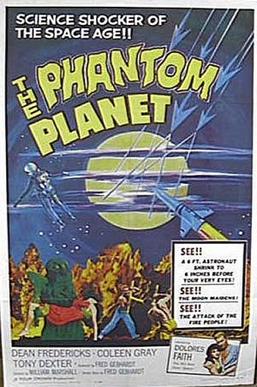
The Phantom Planet is a 1961 independently made American black-and-white science fiction film, produced by Fred Gebhardt, directed by William Marshall, that stars Dean Fredericks, Coleen Gray, Anthony Dexter, and Francis X. Bushman. The film was released in the U.S. by American International Pictures as a double feature with Assignment Outer Space.

Alien is a 1979 science fiction horror film directed by Ridley Scott and written by Dan O'Bannon, based on a story by O'Bannon and Ronald Shusett. It follows a spaceship crew who investigate a derelict spaceship and are hunted by a deadly extraterrestrial creature. The film stars Tom Skerritt, Sigourney Weaver, Veronica Cartwright, Harry Dean Stanton, John Hurt, Ian Holm, and Yaphet Kotto. It was produced by Gordon Carroll, David Giler, and Walter Hill through their company Brandywine Productions and was distributed by 20th Century-Fox. Giler and Hill revised and made additions to the script; Shusett was the executive producer. The alien creatures and environments were designed by the Swiss artist H. R. Giger, while the concept artists Ron Cobb and Chris Foss designed the other sets.
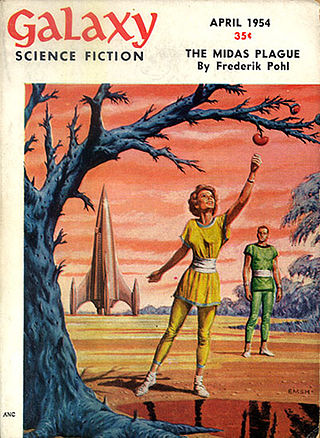
"Special Delivery" is a science fiction short story by American writer Damon Knight. It first appeared in the April 1954 issue of Galaxy Science Fiction and has been reprinted a number of times, in Operation Future (1955), Far Out (1961), and The Best of Damon Knight (1976).

The Last Story is an action role-playing game developed by Mistwalker and AQ Interactive and published by Nintendo for the Wii. It was released in Japan in January 2011, Europe in February 2012 and North America by Xseed Games in August 2012. The Last Story takes place upon the island fortress of Lazulis, in a world that is slowly being drained of life by an unknown force. The story focuses on a group of mercenaries looking for work on Lazulis; one of their number, Zael, dreams of becoming a knight. After receiving the mystical "Mark of the Outsider", Zael becomes involved with a noblewoman named Calista in an ongoing war between humans and the beast-like Gurak. During gameplay, the player controls Zael as he and the mercenary group to which he belongs undertake missions on Lazulis. Zael can command the rest of the mercenary squad during missions, and fights in battles that involve action, tactical and stealth elements. Multiple online multiplayer modes were also present.
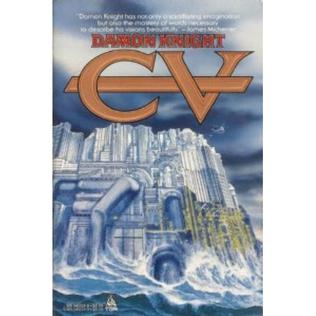
CV is a 1985 science fiction novel by American writer Damon Knight. It is the first novel in the "Sea Venture Trilogy", and was followed by The Observers (1988) and A Reasonable World (1991).
"Unhuman Sacrifice" is a short story by the American writer Katherine MacLean. It was first published in Astounding Science Fiction in November 1958, and has appeared in several anthologies.
References
- ↑ "The Enemy". Venture Science Fiction (1957 Digest). 2 (1). Fantasy House. January 1958.
- ↑ "Stories, Listed by Author: KNIGHT, DAMON (Francis) (1922-2002)". Index to Science Fiction Anthologies and Collections.
- ↑ Knight, Damon (1976), The Best of Damon Knight , Nelson Doubleday, New York